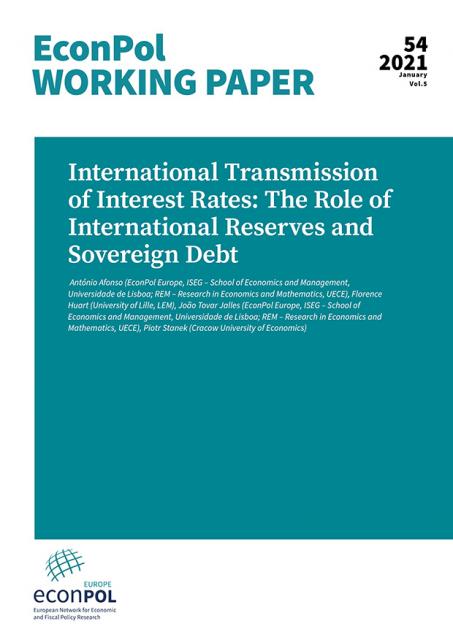International Transmission of Interest Rates: The Role of International Reserves and Sovereign Debt
In this study of the determinants of international transmission of interest rates with a special emphasis on the role of international reserves and government debt, authors confirm that the trilemma still holds. They find significant spillovers from the U.S. interest rates to other countries, mostly for Advanced Economies; a dampening effect of the share of external liabilities in the domestic currency; a negative effect of international reserves on interest rates; higher reserves decrease risk premia for long-term interest rates; the significance of spillovers fades once the sovereign debt reaches 100% of GDP in developed countries.
We analyse the international transmission of interest rates by focusing on the role of the accumulation of international reserves and on the financing of sovereign debt. An increase in foreign exchange reserves is expected to moderate the influence of U.S. interest rates. However, a high level of government debt raises the sovereign risk premium. Moreover, an increase in the stock of government debt denominated in foreign currency may increase the expected rate of depreciation of the domestic currency. We explain the theoretical mechanisms in a model, which describes the money market equilibrium in an economy with capital account openness. Then, we test the predictions of the model for a panel of advanced and developing economies over the period 1970-2018. Our main findings are: i) significant spillovers from the U.S. interest rates to other countries, mostly for Advanced Economies; ii) a dampening effect of the share of external liabilities in the domestic currency, clearly a determinant of risk premium; iii) a negative effect of international reserves on interest rates, as expected; iv) higher reserves decrease risk premia, for long-term interest rates; v) the significance of spillovers fades once the sovereign debt reaches 100% of GDP in developed countries.
António Afonso, Florence Huart, João Tovar Jalles, Piotr Stanek: "International Transmission of Interest Rates: The Role of International Reserves and Sovereign Debt", EconPol Working Paper 54, January 2021
